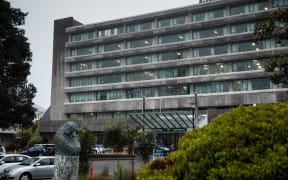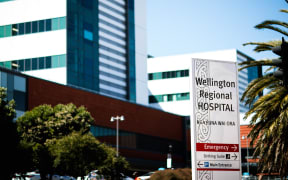"Stark" findings about the poor state of the Wellington region's hospitals have triggered a rush to get a $2 billion fixit plan underway.
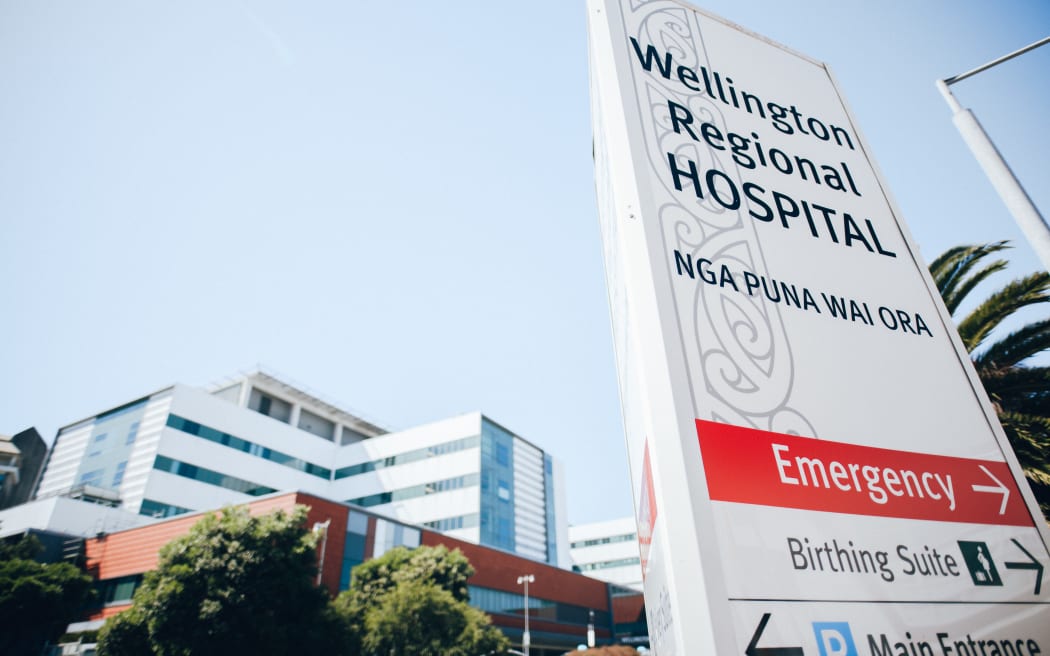
Photo: RNZ / Dom Thomas
Newly released DHB documents show earthquake risks and escalating health demands have been the trigger for "dramatically changed urgency and priorities" for the region's health leaders.
They show the Capital and Coast and Hutt Valley DHBs rushing to get a $200 million plan in front of Treasury, to kick off a regionwide overhaul by 2035 roughly costed at $1.5 billion-$2 billion.
Read the plans in full (PDF:2.6MB)
This aims to rapidly relocate the emergency department and many other services by early 2024, creating 50 percent more ED spaces and four new intensive care bays - space that reports say is desperately needed.
"Lack of capacity to meet demand and increasing patient complexity is causing delayed care and patient harm," one report says.
"This shortfall means that we are increasingly cancelling planned care in order to provide acute services."
The OIA papers also reveal:
- The big shift-around at Newtown depends firstly on getting the new children's hospital in Newtown open, to free up space to move into
- The major Heretaunga tower block at Hutt Hospital had less than four years of life left in it, even before it was rated 15 percent of seismic standard recently
- The master plan forecasts up to 350 more hospital beds needed in the region by 2035
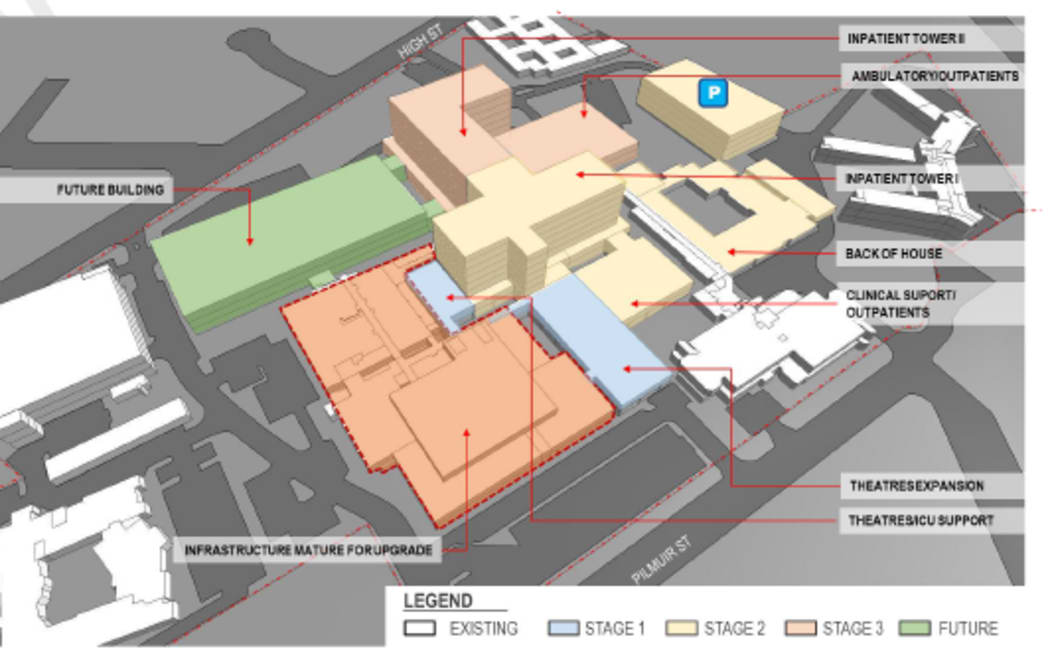
Photo: DHB OIA
The DHBs have been working on the plans since early last year.
Their recent discovery that the Newtown emergency department was just 34 percent of earthquake standard led them to put things on a fast track.
A wider checkup of their other buildings had already unsettled them.
"The findings about our facilities and sites were stark," they say of the consultant's report back.
The 1970s high-rises in Wellington are suffering a lack of maintenance, as are the emergency systems and telecommunications in all the region's hospital buildings, to name just a few of the inadequacies.
"This reflects a legacy of a poorly funded health system, compounded by continual DHBs' deficits over time, which has made the choice to invest in facilities and infrastructure difficult.
"The Kenepuru and Hutt Valley hospital sites and infrastructure require significant upgrade and change given the age and condition of the sites. They will be reconfigured to be part of an optimal hospital network."
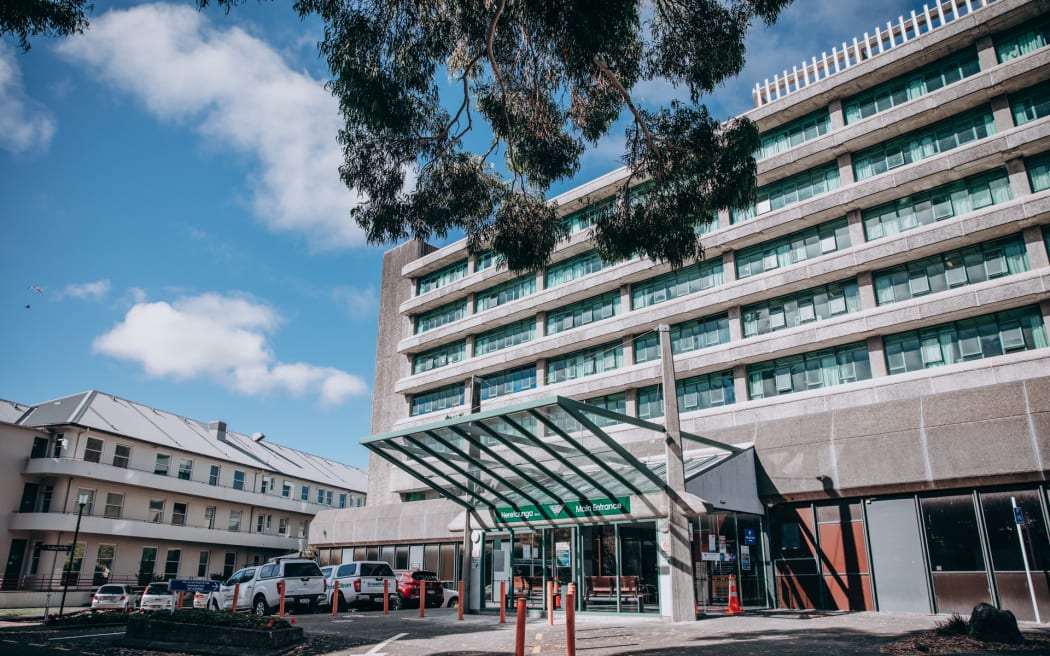
Hutt Hospital Photo: RNZ / Dom Thomas
None of this will come cheap.
The documents show the boards considered and discarded options to demolish and rebuild Wellington's ED, or strengthen it, as either too slow (10 years to do a detailed business case) or too disruptive.
They have settled instead on major moves involving refurbishing 14,000 square metres of existing buildings over coming months.
This is costed at about $100m or $7300 per square metre, according to construction estimates - but $172m-$250m, according to March DHB minutes.
The moves are:
- Opening the children's hospital to free up the old children's hospital
- Moving main outpatients into a refurbished old children's hospital
- Moving the clinical measurement unit (CMU) into main outpatients
- Shifting the ED into 3500 square metres left vacant by CMU; the ED fitout would take 18-24 months
- Expanding the medical assessment and planning unit into level 4 of the clinical services block
- Extending the ICU into office space
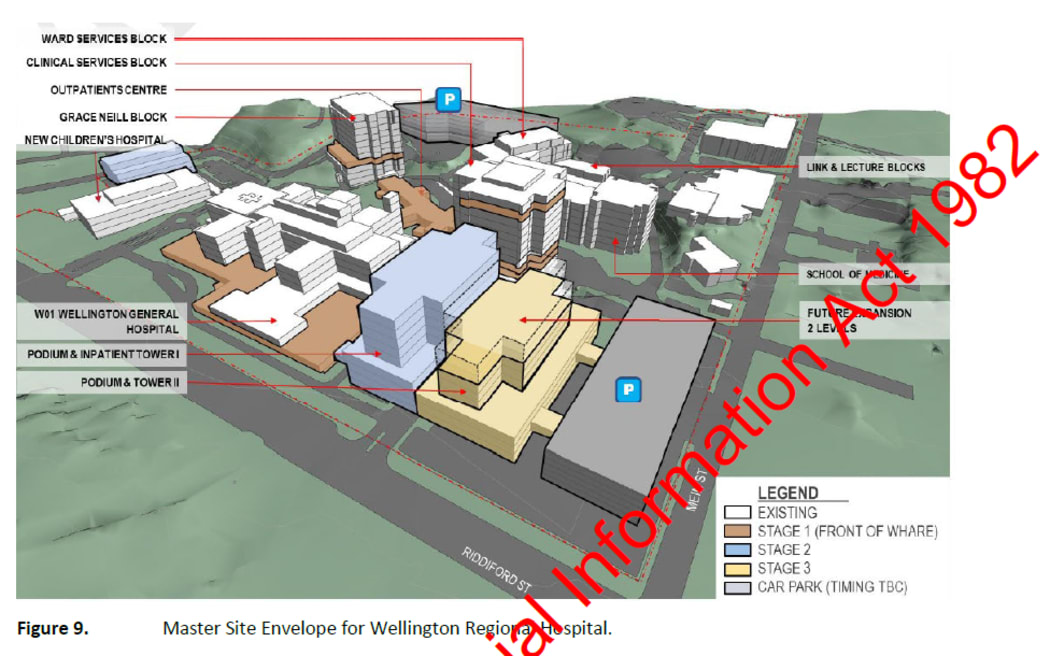
Photo: DHB OIA
Demolishing the existing ED would mean that space for extra beds or operating theatres would not be lost.
No major structural seismic work would be done, but fire safety upgrades would be.
The complications are myriad, among them possible delays to replacing the hospital's copper pipes, afflicted for years by pinhole leaks.
The DHBs have been consulting with user groups, iwi, and clinicians. "These plans are now being finalised for costing."
Last night, Health NZ Te Whatu Ora told RNZ that: "Due to the complexities of the services involved we are still in the process of finalising the indicative business case, and are also in the process of updating the cost figure to reflect the construction market in Wellington at this time.
"We continue to work to progress this important project at pace."
The master plan revolves around how clinical services are divided.
"Hutt Hospital is the only site that can increase theatre capacity in the short-term," board minutes said.
It is envisaged the Hutt would get five extra theatres, but that complex surgery would be focused on Wellington Hospital only.
One report says the Heretaunga block would not be demolished till the final stage three of the master plan, but that looks unlikely now because of its subsequently discovered low quake rating, though it did win a reprieve of sorts from closure last month.
If Wellington's ED was not already far too small, the hospital might struggle to justify closing it.
"This building would not be identified as earthquake prone," said the detailed seismic assessment of it, which was released to RNZ.
"If a building is not earthquake prone, there is no requirement to undertake seismic work. However, this does not mean that the seismic risk posed by the building is negligible."
The assessment said the ED would probably struggle to function after a major earthquake.



